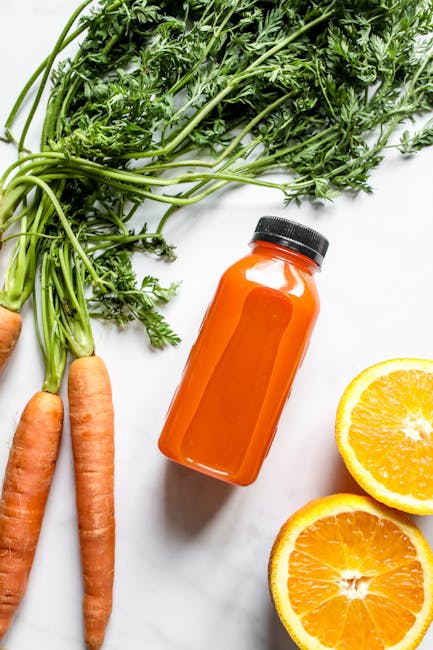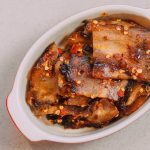Discover the vibrant world of delicious carrot juice, a beverage with a surprisingly rich history and global appeal. While pinpointing the exact origin of carrot juice is difficult, its roots are undeniably intertwined with the cultivation of the carrot itself. Carrots, originally a purple or white root vegetable, were cultivated in Central Asia thousands of years ago, finding their way to Europe and eventually the Americas through trade and migration. Early forms were far smaller and less sweet than the modern orange carrot we know, a result of centuries of selective breeding. The development of the orange carrot, associated with the Netherlands in the 17th century, significantly increased its popularity and paved the way for its widespread juicing.
The journey of the carrot from humble root to popular juice is a testament to its nutritional value and versatility. The widespread adoption of juicing in the 20th century propelled carrot juice into the limelight. Early proponents often highlighted its purported health benefits, leading to its incorporation into various health-conscious diets. This led to a surge in production and consumption, particularly in North America and Europe. Today, the global carrot juice market is a multi-million dollar industry, reflecting the enduring popularity of this simple yet nutritious beverage. Statistics show a significant increase in demand for organic and cold-pressed carrot juice, highlighting a growing consumer focus on quality and natural ingredients.
Beyond its commercial success, carrot juice holds a significant place in various cultures. In some parts of Asia, carrots are often incorporated into traditional dishes and drinks, showcasing their versatility beyond simple juicing. In many Western cultures, carrot juice is associated with a healthy lifestyle and is often marketed as a source of essential vitamins and antioxidants, particularly beta-carotene, which the body converts to Vitamin A. The bright orange color of the juice itself is visually appealing, connecting it to notions of energy, vitality, and health. Interestingly, the high beta-carotene content also contributes to the slightly sweet taste, making it a palatable beverage for people of all ages.
From its humble beginnings in ancient Central Asia to its current status as a globally recognized health drink, carrot juice boasts a fascinating history. Its nutritional benefits, coupled with its ease of preparation and pleasant taste, have secured its place in kitchens and health regimes worldwide. This simple juice, with its deep orange hue and rich history, is more than just a drink; it’s a testament to the enduring appeal of nature’s bounty and the ingenuity of human cultivation.
Ingredients and Measurements for Delicious Carrot Juice
This recipe yields approximately 4 cups of fresh carrot juice, perfect for enjoying immediately or storing for later consumption. The quantities below are a guideline; feel free to adjust based on your juicer’s capacity and your personal preference for carrot concentration.
Carrots: The star of the show! We recommend using approximately 1.5 pounds (approximately 680 grams) of fresh, high-quality carrots. This translates to roughly 8-10 medium-sized carrots. Choosing the right carrots is crucial for optimal flavor and nutrient content. Look for carrots that are firm, vibrant orange in color, and free from blemishes or soft spots. Avoid carrots that appear wilted or have green tops that are significantly dried out, as these may indicate reduced freshness and flavor.
Water (Optional): Adding a small amount of water can help facilitate the juicing process, especially if your carrots are particularly dry or your juicer struggles with dense produce. Start with approximately ½ cup (120ml) of cold, filtered water. Do not add too much water, as this will dilute the flavor and nutrient concentration of your juice. You can always add more water if needed to achieve desired consistency, but it’s harder to remove excess water once added.
Lemon or Lime Juice (Optional): A squeeze of fresh citrus juice (about 1 tablespoon or 15ml of lemon or lime juice) can enhance the flavor profile of your carrot juice and help preserve its vibrant color and prevent oxidation. The acidity of the citrus juice acts as a natural preservative, helping to maintain the nutritional value and prevent browning. However, this is entirely optional; many find the pure carrot flavor perfectly delightful.
Ginger (Optional): For those who enjoy a bit of a zing, a small piece of fresh ginger (approximately 1-inch piece, peeled and roughly chopped) can add a wonderful spicy kick to your carrot juice. Ginger adds a layer of complexity to the flavor and is also known for its anti-inflammatory properties. Adjust the amount of ginger based on your personal preference for spiciness. Too much ginger can overpower the delicate sweetness of the carrots.
Other Additions (Optional): Feel free to experiment with other ingredients to create your own unique carrot juice blend. A small apple or a few leafy greens (like spinach or kale) can add sweetness and nutrients. Be mindful of the ratio of carrots to other ingredients to maintain the dominant carrot flavor. Always wash all produce thoroughly before juicing to remove any dirt or pesticides.
Important Note: The measurements provided are approximations. The actual amount of juice you obtain may vary slightly depending on the size and type of carrots used, and the efficiency of your juicer. It’s always best to start with the suggested quantities and adjust according to your preference.
Preparation of Ingredients (Washing, Peeling, Chopping)
Before embarking on the journey to create delicious carrot juice, meticulous preparation of the carrots is paramount. The quality of your final product hinges significantly on this initial step. We’ll be focusing on washing, peeling, and chopping approximately 1 pound (450g) of carrots, a quantity ideal for a serving of 2-3 people. Adjust this quantity according to your needs.
Washing: Begin by thoroughly washing the carrots under cold, running water. Avoid using hot water, as it can leach nutrients from the carrots. Scrub each carrot individually with a vegetable brush to remove any ingrained dirt or soil. Pay particular attention to the crevices and root end. Persistent scrubbing is key to ensuring a clean and safe final product. If you notice any blemishes or damaged areas, trim them away with a sharp knife.
Peeling: While some prefer to juice carrots with the skin on for added fiber, peeling them offers a smoother, sweeter juice with a more refined texture. To peel, use a vegetable peeler, holding the carrot firmly and moving the peeler in a smooth, consistent motion along the length of the carrot. Avoid applying excessive pressure; this can lead to uneven peeling and potential waste. A sharp peeler is crucial for efficient and precise peeling, minimizing effort and maximizing yield.
Chopping (Optional but Recommended): While many juicers can handle whole carrots, chopping them into smaller, manageable pieces offers several advantages. Smaller pieces are processed more efficiently by the juicer, leading to a faster juicing process and a higher juice yield. Furthermore, chopping allows for better distribution of the carrots within the juicer’s feed chute, preventing jams and clogs. For optimal juicing, chop the carrots into 1-2 inch (2.5-5cm) pieces. This size is generally suitable for most juicer models.
Professional Recommendation: If you’re aiming for a truly vibrant and flavorful carrot juice, consider the type of carrots you use. Organic carrots are generally preferred as they are less likely to have been treated with pesticides or other chemicals. Additionally, choosing carrots with a deep orange hue indicates a higher concentration of beta-carotene, leading to a more nutrient-rich juice.
Important Note: After washing, peeling, and chopping, it’s advisable to immediately process the carrots. This helps to prevent oxidation and preserves the nutrients and vibrancy of the juice. If you’re unable to juice immediately, store the prepared carrots in an airtight container in the refrigerator for a short period, but aim to juice them within a few hours for optimal results.
Following these detailed steps ensures that your carrot juice will not only taste delicious but will also be of the highest quality and nutritional value.
Juicing Process
Creating delicious and nutritious carrot juice is surprisingly straightforward. This section details the process, from selecting the right carrots to enjoying your freshly squeezed juice. We’ll cover both manual and electric juicing methods.
Choosing Your Carrots: Begin with the freshest carrots you can find. Look for firm, vibrant orange carrots without blemishes or soft spots. Approximately 1 pound (about 450g) of carrots will yield roughly 2 cups of juice, though this can vary based on carrot size and moisture content. Avoid carrots that are wilted or show signs of decay.
Washing and Preparation: Thoroughly wash the carrots under cold running water, scrubbing away any dirt or debris. It’s crucial to remove any pesticide residue. You can use a vegetable brush for a more effective clean. Trim off the green tops and any damaged ends. Peeling is optional; many people prefer to leave the peels on for added fiber and nutrients, but if you prefer a smoother juice, peel them using a vegetable peeler.
Manual Juicing (using a hand juicer): If you’re using a manual juicer, cut the carrots into smaller, manageable pieces. This will make it easier to feed them through the juicer. The size will depend on your specific juicer model, but generally, pieces around 1-2 inches in length are ideal. Feed the carrot pieces into the juicer, applying consistent pressure. This process can be more time-consuming than using an electric juicer, but it’s a great option for smaller batches.
Electric Juicing (using a centrifugal or masticating juicer): Electric juicers significantly speed up the process. For centrifugal juicers, cut the carrots into pieces that fit comfortably into the feeding chute. Most models can handle larger pieces than manual juicers. For masticating juicers, you can often use slightly larger pieces. Always consult your juicer’s manual for specific recommendations. Simply feed the carrots into the machine and let it do the work! Remember to never put your hands or utensils into the juicer while it’s operating.
Post-Juicing Steps: Once juicing is complete, immediately pour the juice into a glass or container. Consume your carrot juice as soon as possible for optimal freshness and nutrient retention. If you need to store it, keep it refrigerated in an airtight container for up to 24 hours. However, the flavor and nutritional value will start to decline after a few hours. For longer storage, consider freezing the juice in ice cube trays.
Professional Recommendations: For the most nutritious juice, use a masticating juicer, as these juicers tend to extract more nutrients and produce less oxidation. Experiment with adding other vegetables or fruits to enhance the flavor and nutritional profile of your carrot juice – ginger, apples, and oranges are popular choices. Always ensure your juicer is thoroughly cleaned after each use to prevent bacterial growth.
Enjoy your freshly made carrot juice! Remember to adjust the quantities of carrots based on your desired amount of juice. Happy juicing!
Straining (if necessary)
While many enjoy the pulpy texture of freshly juiced carrots, others prefer a smoother, clearer juice. Straining your carrot juice is entirely optional, depending on your personal preference. If you choose to strain, it will remove the pulp, resulting in a juice that’s easier to drink and potentially less prone to separating over time. However, straining also removes some of the beneficial fiber present in the pulp.
There are several methods you can use to strain your carrot juice, each with its own advantages and disadvantages. The simplest method involves using a fine-mesh sieve or strainer. This is a readily available and inexpensive option. Place the sieve over a bowl or pitcher and carefully pour your freshly juiced carrot mixture through it. Use a spatula or spoon to gently press the pulp against the sieve to extract as much juice as possible. This method is effective but can be somewhat time-consuming, especially for larger batches.
For a more efficient straining process, consider using a nut milk bag or cheesecloth. These are particularly useful for achieving a very smooth, pulp-free juice. Line a fine-mesh sieve with a nut milk bag or several layers of cheesecloth. Pour the carrot juice into the lined sieve and let it drain. Again, gently press the pulp to maximize juice extraction. This method is excellent for removing even the finest particles of pulp, resulting in a beautifully clear juice. However, cleaning a nut milk bag can be slightly more involved than cleaning a sieve.
If you’re dealing with a large quantity of carrot juice, a food mill can prove invaluable. A food mill effectively separates the pulp from the juice without requiring much manual effort. Simply feed the juiced carrot mixture into the mill’s hopper, and crank the handle. The juice will pass through the mill’s sieve, leaving the pulp behind. This method is efficient and less strenuous than manual straining, making it ideal for larger-scale juice production.
Regardless of the straining method you choose, remember to work quickly to prevent the juice from oxidizing and changing color. Exposure to air can cause the juice to darken. Once strained, immediately transfer your juice to an airtight container and refrigerate it. Store it in the refrigerator for up to 2 days for optimal freshness and flavor. Avoid storing the juice for longer periods as it may spoil and become unsafe for consumption. Enjoy your delicious, freshly strained (or unstrained!) carrot juice!
Important Note: If you are using a blender to make your carrot juice and you are straining, it is recommended to use a fine-mesh sieve or nut milk bag. A food mill may not be as effective with this method.
Serving Suggestions
Our Delicious Carrot Juice is incredibly versatile and can be enjoyed in a multitude of ways, both on its own and as a key ingredient in other delightful creations. Here are some serving suggestions to help you maximize the flavor and nutritional benefits of this vibrant beverage.
Straight Up: The simplest and perhaps purest way to enjoy our carrot juice is straight from the bottle, chilled. Pour 8-12 ounces into a tall glass filled with ice. This allows you to fully appreciate the natural sweetness and earthy notes of the carrots. Consider adding a thin wedge of lime or orange for a zesty twist.
Breakfast Booster: Start your day with a nutritious and flavorful boost! Mix 4 ounces of our carrot juice into your favorite smoothie recipe. This will add a vibrant orange hue and a boost of vitamins and antioxidants. Try blending it with spinach, banana, and a touch of Greek yogurt for a creamy and satisfying breakfast smoothie. A sprinkle of chia seeds or flax seeds will further enhance the nutritional value.
Creative Cocktails: For a sophisticated and healthy twist on classic cocktails, incorporate our carrot juice into your favorite mixed drinks. Try a Carrot Caipirinha : muddle 2 limes, 2 tablespoons of sugar, and 4-6 mint leaves, then add 2 ounces of our carrot juice and 2 ounces of cachaça (or vodka for a non-alcoholic version). Shake with ice and strain into a rocks glass filled with ice. Garnish with a lime wedge and a sprig of mint.
Savory Additions: Don’t limit yourself to sweet applications! Our carrot juice can add a unique depth of flavor to savory dishes. Add 2-4 ounces to your favorite soup recipes, like butternut squash or tomato soup, for a subtle sweetness and vibrant color. It can also be used as a base for a light vinaigrette. Simply whisk together 2 ounces of carrot juice with 4 ounces of olive oil, 1 tablespoon of apple cider vinegar, and salt and pepper to taste.
Homemade Marinades: Infuse your meats and vegetables with a touch of sweetness and vibrancy using our carrot juice as a marinade ingredient. Combine 4 ounces of carrot juice with 2 tablespoons of soy sauce, 1 tablespoon of honey, 1 tablespoon of ginger, and a clove of minced garlic. Marinate your chicken, pork, or tofu for at least 30 minutes before grilling or baking. Note: The sugar content in the marinade may cause browning, adjust cooking time accordingly.
Ice Pops & Sorbets: For a refreshing summer treat, freeze our carrot juice into homemade ice pops or sorbets. Simply pour the juice into ice pop molds or a shallow freezer-safe container, and freeze until solid. For a more sophisticated sorbet, blend the juice with a touch of lemon juice and a sweetener of your choice (honey or agave nectar) before freezing.
Important Note: While our carrot juice is delicious and nutritious, it is best consumed fresh for optimal flavor and nutrient retention. If storing, refrigerate and consume within 3-5 days. Always check the expiration date on the bottle.
Storage Instructions for Delicious Carrot Juice
Proper storage is crucial to maintaining the freshness, flavor, and nutritional value of your Delicious Carrot Juice. Following these instructions will ensure you enjoy the best possible taste and experience.
Refrigeration is key: Once opened, your bottle of Delicious Carrot Juice should be refrigerated immediately. This significantly slows down the oxidation process, which can lead to a loss of flavor and nutrients, as well as potential spoilage. Keep the bottle tightly sealed in the refrigerator at a temperature between 35°F and 40°F (1.7°C and 4.4°C).
Shelf Life: Unopened, Delicious Carrot Juice has a shelf life of approximately 14 days when stored at room temperature (below 75°F or 24°C), though we recommend consuming it within 7 days for optimal freshness. Once opened and refrigerated, it is best consumed within 3 days. After this time, the juice may begin to lose its vibrant color, fresh aroma, and optimal taste. While it may still be safe to consume, its quality will have significantly diminished.
Quantity Considerations: For best results, purchase only the amount of Delicious Carrot Juice you can reasonably consume within the recommended timeframe. Smaller bottles are ideal for individual consumption or smaller households, minimizing waste and maximizing freshness. If you purchase a larger bottle, consider pouring smaller quantities into individual serving glasses each day to avoid repeated opening and closing of the main bottle.
Avoid Exposure to Light: Direct sunlight or prolonged exposure to bright light can degrade the nutrients and alter the flavor of your juice. Store the bottle in a cool, dark area of your refrigerator, away from direct light sources. Opaque containers help to protect the juice from light damage.
Proper Handling: Always wash your hands thoroughly before handling the juice bottle. Avoid contaminating the juice by using a clean glass or cup to pour the juice. If you notice any unusual changes in the appearance, smell, or taste of the juice (such as discoloration, off-putting odor, or sour taste), discard it immediately. Do not consume juice that has been left at room temperature for an extended period, exceeding the recommended 7-day storage limit for unopened bottles.
Freezing: While not recommended for maintaining the optimal texture and taste, Delicious Carrot Juice can be frozen. However, freezing may cause some separation and slight changes in consistency upon thawing. Pour the juice into freezer-safe containers, leaving some headspace for expansion, and freeze for up to 3 months. Allow the juice to thaw completely in the refrigerator before consuming.
Note: These storage instructions are recommendations for maintaining the quality and safety of our product. While we take every precaution to ensure the highest quality, we cannot guarantee the quality of the product after the recommended storage times have elapsed.
Delicious Carrot Juice: Recommendations
Delicious Carrot Juice is a refreshing and nutritious beverage, perfect for a healthy boost any time of day. To fully enjoy its benefits and delicious flavor, we recommend following these guidelines.
Serving Suggestions: Enjoy Delicious Carrot Juice chilled straight from the refrigerator. For a creamier texture, blend it briefly with a few ice cubes before serving. It’s delightful on its own, but you can also enhance the experience. Try adding a splash of citrus juice, such as orange or lemon, for a zesty twist. A pinch of ground ginger or cinnamon can add warmth and complexity. For a more decadent treat, blend in a dollop of plain yogurt or a few berries for a naturally sweet smoothie. Experiment with different flavor combinations to discover your personal favorite!
Storage Conditions: For optimal freshness and flavor, store Delicious Carrot Juice in an airtight container in the refrigerator. It is best consumed within 2-3 days of juicing to retain maximum nutritional value and prevent spoilage. Avoid storing it in direct sunlight or at room temperature for extended periods, as this can lead to degradation of vitamins and a change in taste.
Complementary Dishes: Delicious Carrot Juice pairs beautifully with a variety of dishes. Its naturally sweet flavor complements savory meals, providing a refreshing contrast. It’s an excellent accompaniment to light lunches such as salads, sandwiches, or wraps. The juice’s sweetness also makes it a perfect partner for breakfast dishes like oatmeal or yogurt parfaits. For a more substantial meal, consider pairing it with a light vegetarian curry or a roasted vegetable platter. The earthy notes of the carrot juice will complement the flavors beautifully.
Nutritional Information (per 8oz serving): Approximate values may vary slightly depending on carrot variety and juicing method.
- Calories: Approximately 70-90 calories
- Vitamin A: Excellent source (contributes significantly to your daily recommended intake)
- Vitamin C: Good source
- Potassium: Good source
- Fiber: Moderate amount (depending on whether pulp is included)
Note: While carrot juice is incredibly healthy, it’s important to consume it in moderation as part of a balanced diet. Individuals with specific dietary concerns or health conditions should consult a healthcare professional or registered dietitian before making significant changes to their diet.
We hope you enjoy Delicious Carrot Juice! Please share your creative serving ideas and feedback with us.





